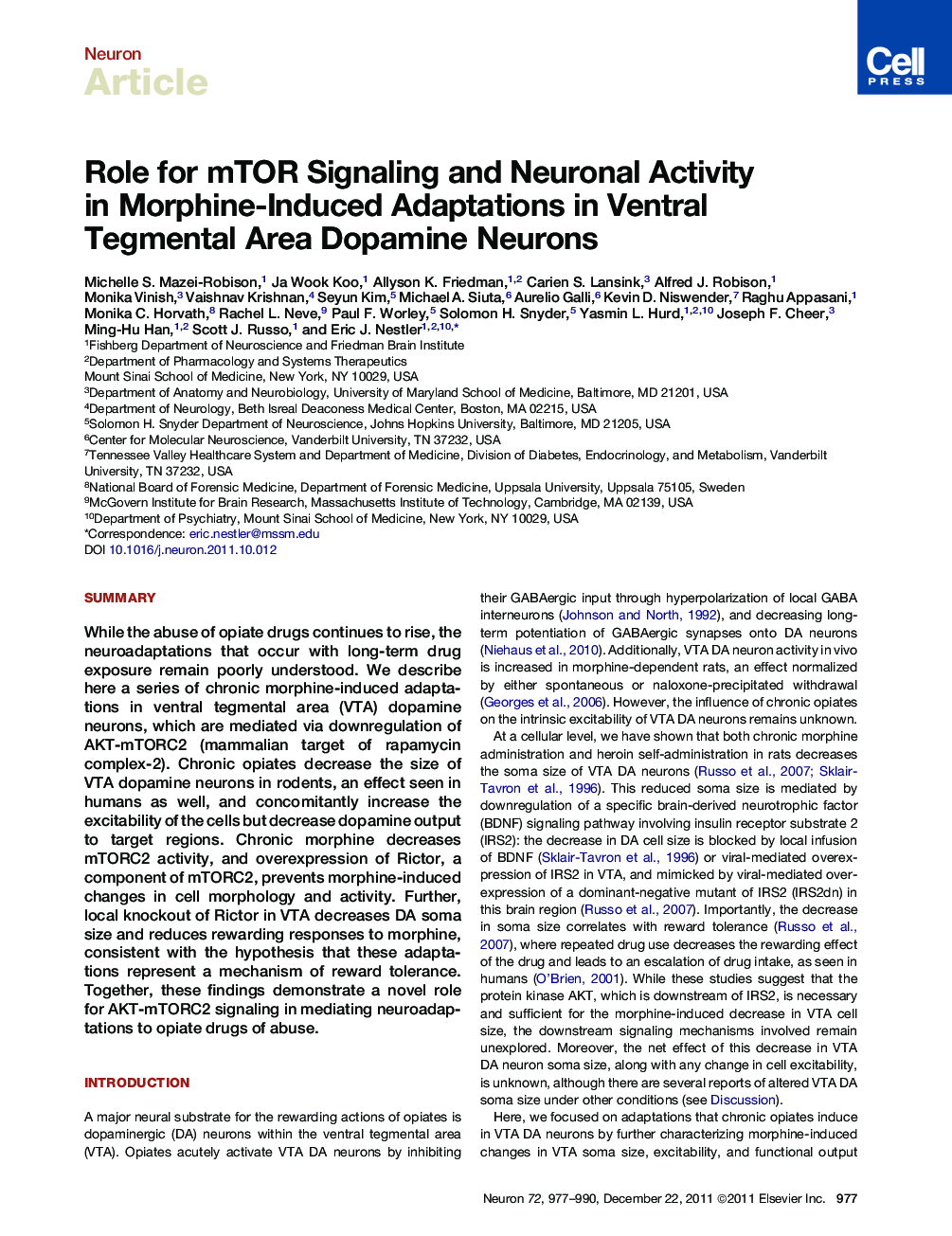| Article ID | Journal | Published Year | Pages | File Type |
|---|---|---|---|---|
| 4321409 | Neuron | 2011 | 14 Pages |
SummaryWhile the abuse of opiate drugs continues to rise, the neuroadaptations that occur with long-term drug exposure remain poorly understood. We describe here a series of chronic morphine-induced adaptations in ventral tegmental area (VTA) dopamine neurons, which are mediated via downregulation of AKT-mTORC2 (mammalian target of rapamycin complex-2). Chronic opiates decrease the size of VTA dopamine neurons in rodents, an effect seen in humans as well, and concomitantly increase the excitability of the cells but decrease dopamine output to target regions. Chronic morphine decreases mTORC2 activity, and overexpression of Rictor, a component of mTORC2, prevents morphine-induced changes in cell morphology and activity. Further, local knockout of Rictor in VTA decreases DA soma size and reduces rewarding responses to morphine, consistent with the hypothesis that these adaptations represent a mechanism of reward tolerance. Together, these findings demonstrate a novel role for AKT-mTORC2 signaling in mediating neuroadaptations to opiate drugs of abuse.
► Morphine decreases VTA DA soma size, increases cell activity, and decreases DA output ► Morphine and reduced IRS2/AKT activity decrease K+ channel expression in the VTA ► Morphine increases mTORC1 and decreases mTORC2 signaling in the VTA ► Decreased mTORC2 signaling in the VTA mediates morphine-induced adaptations
